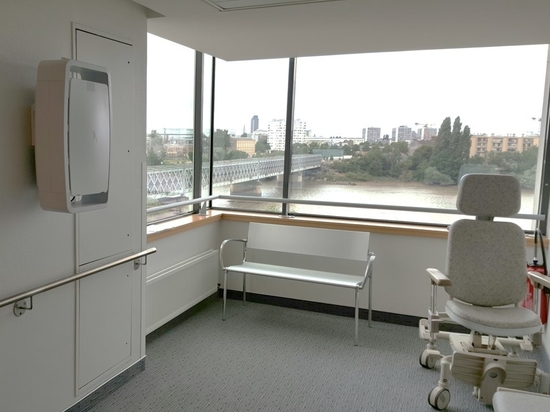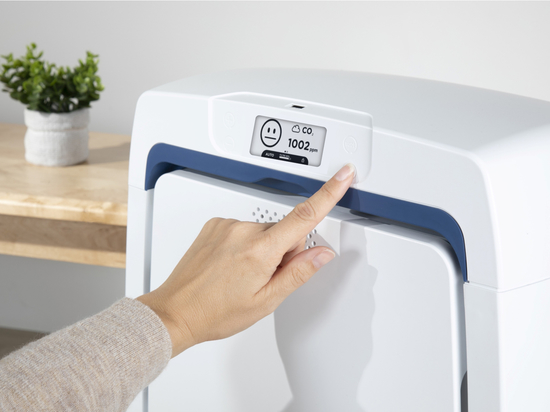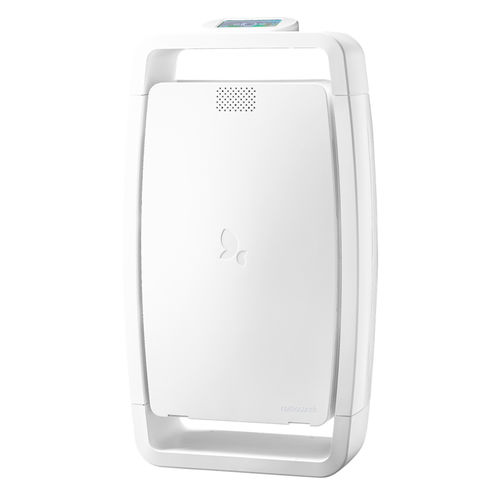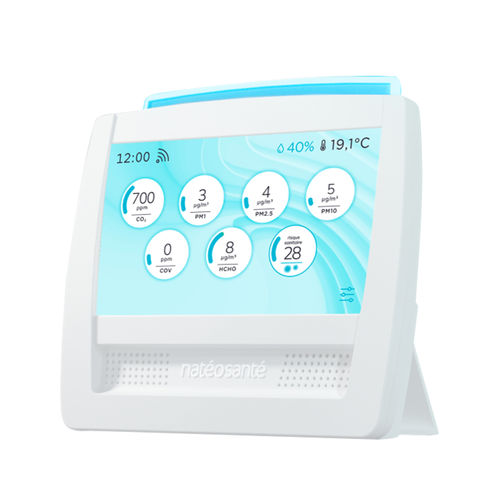
#Industry News
Formaldehyde, Formalin, and Health Risks: How to Protect Yourself Effectively
Discover the dangers of formaldehyde, the high-risk professions, and innovative solutions to protect your health in contaminated spaces.
Formaldehyde, Formalin, and Health Risks: How to Protect Yourself Effectively
Formaldehyde, often referred to in its liquid form as formalin, is a chemical compound widely used across many industrial and medical sectors. Despite its broad applications, its harmful effects on human health are undeniable, especially for workers exposed to it. In this article, we will detail the dangers of formaldehyde exposure, the professions most at risk, and the best ways to reduce exposure, emphasising the importance of prevention.
What is Formaldehyde, and Where is it Found?
Formaldehyde is a volatile organic compound (VOC) used in the production of various consumer and industrial products. It is commonly found in building materials, resins, adhesives, disinfectants, and even some cleaning products. In the medical field, it is widely used for preserving biological samples.
Unfortunately, exposure to formaldehyde can lead to serious health effects. Classified as a carcinogen by the World Health Organization (WHO), this compound causes respiratory irritations, asthma attacks, and allergic reactions. Its volatility and persistence in the air make it a difficult indoor pollutant to eliminate, even with ventilation.
Formaldehyde Exposure Limits: What Authorities Recommend
Several organisations have set limits to protect public health and workers exposed to formaldehyde. Here are the key recommendations:
• WHO: 100 µg/m³ for 30-minute exposure to avoid short-term irritation.
• HSE (Health and Safety Executive)
o 2 ppm (parts per million) for a 15-minute exposure
o 0.5 ppm for an 8-hour time-weighted average
• ANSES (France): 10 µg/m³ as an annual average to limit chronic effects.
• French decree on indoor air quality in public establishments: 30 µg/m³ as an annual average for public buildings.
• INRS (France) : 50 µg/m³ over an 8-hour workday and 100 µg/m³ for 15 minutes of short-term exposure.
These limits are set to protect individuals from both immediate and long-term effects of formaldehyde, including the risk of cancer and respiratory diseases.
Health Risks of Formaldehyde Exposure
Prolonged exposure to formaldehyde can cause severe health problems, such as:
• Respiratory cancers: Studies show that workers exposed to formaldehyde are at higher risk of developing nasopharyngeal and sinus cancers.
• Irritations and allergies: Even at low doses, formaldehyde can trigger allergic reactions and irritation.
• Chronic respiratory diseases: Conditions such as occupational asthma and bronchitis are common among workers regularly exposed to this pollutant.
Professions at Risk of Formaldehyde Exposure
Some professions are more exposed to formaldehyde than others, including:
• Woodworkers and furniture makers: Due to its presence in glues and resins.
• Laboratory and medical staff: Through the use of formalin for sample preservation.
• Construction professionals: Exposure to building materials that contain formaldehyde.
• Embalmers: Frequent use in embalming solutions.
• Hairdressers: Some hair straightening products contain formaldehyde.
These workers must be protected with strict preventive measures, including monitoring formaldehyde concentrations in the air.
How to Protect Against Formaldehyde Exposure
To minimise risks, here are some essential preventive measures:
• Control exposure levels: Employers must monitor and comply with the exposure limits set by authorities. Regular air quality monitoring is essential.
• Personal protective equipment (PPE): The use of masks and gloves is crucial for workers handling products containing formaldehyde.
• Ventilation and air filtration systems: Adequate ventilation and air filtration systems are necessary to reduce formaldehyde concentration in enclosed spaces.
Why Ventilation Alone is Not Enough
As a VOC, formaldehyde remains in the air for long periods and continues to be released from materials in the environment. Unlike gases like CO2, it cannot be effectively eliminated solely through ventilation. This is why high-performance air purifiers are crucial to clean contaminated spaces.
Innovative Solution: EOLIS Air Manager
To address these challenges, NatéoSanté’s EOLIS Air Manager air purifier offers a high-tech solution to effectively eliminate formaldehyde and other VOCs. Designed to meet the needs of high-risk environments like hospitals, laboratories, industries, and other sensitive areas, this device is tested and approved by independent laboratories, demonstrating exceptional filtration performance.
High-Density Activated Carbon Filter
The EOLIS Air Manager is equipped with a specially designed activated carbon filter to adsorb formaldehyde molecules. With up to 1 kg of activated carbon granules, this filter efficiently captures formaldehyde, significantly reducing its concentration in the air.
Optimised Airflow for Maximum Efficiency
The device is designed to maximise contact between polluted air and activated carbon granules, ensuring rapid and effective adsorption of VOCs, including formaldehyde. This allows the EOLIS Air Manager to maintain optimal performance even in highly polluted environments.
Controlled Active Oxygen Deep Clean Technology
In addition to conventional filtration, the EOLIS Air Manager features a Deep Clean function using controlled active oxygen, which eliminates pollutants such as formaldehyde not only in the air but also on surfaces. This function, based on controlled active oxygen emission, deeply cleans both air and surfaces in a room. This process neutralises 99% of contaminants, including gaseous compounds like formaldehyde, in just 60 minutes.
Scientifically Proven Results
Tests conducted by independent laboratories, such as the Tipee research institute, show that the EOLIS Air Manager S (with Deep Clean function) reduces formaldehyde concentrations by up to 79% in just 15 minutes, with an extrapolation to 100% in 90 minutes in 50m³ environments.
This solution is particularly suited to environments requiring optimal hygiene, such as hospitals and clinics, where air quality is a top priority.
Conclusion: Enhancing Safety and Employer Reputation
Investing in air purification solutions like the EOLIS Air Manager not only ensures compliance with formaldehyde exposure standards but also improves employee safety. Moreover, companies that prioritise workplace health strengthen their employer brand, attracting and retaining talent while reducing occupational risks.
Protect your health and that of your colleagues today! Discover how the EOLIS Air Manager can effectively eliminate formaldehyde and improve air quality in your spaces: https://www.nateosante.com/en/air-purification/eolis-air-manager/
Contact us for more information: https://www.nateosante.com/en/contact-us/
References:
• INRS and ANSES: Occupational Asthma in France.
• WHO: Environmental Health Report on Chemical Substances.
• American Cancer Society: Cancer Risks Related to Formaldehyde.







